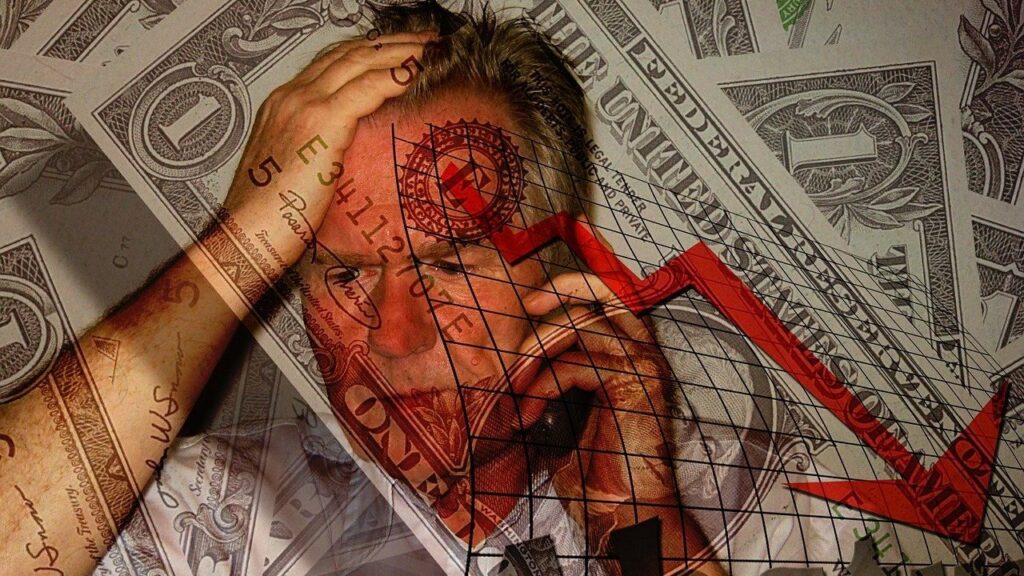More Banks Get Credit Downgrades as Financial Crisis Continues to Bubble Under the Surface

The financial crisis precipitated by rising interest rates continues to bubble under the surface.
Earlier this month, Moody’s cut the credit rating of 10 small and midsize banks. It also placed six large banks on review for potential downgrades and revised 11 more banks from a stable outlook to a negative outlook.
This week, S&P Global followed Moody’s lead and downgraded the credit ratings of five banks. It also lowered the outlook for several others
The sharp rise in interest rates and quantitative tightening deployed since March 2022 to combat high inflation are weighing on many US banks’ funding, liquidity and spread income. These factors have also caused the value of banks’ assets to fall and raised the odds of asset quality deterioration.”
The five downgraded banks are:
- Associated Banc Corp.
- Comerica Inc.
- KeyCorp
- UMB Financial Corp.
- Valley National Bancorp
These five banks have a combined asset base of $400 billion.
KeyCorp ranks as the 20th-largest bank in the nation with $192 billion in assets. Dallas-based Comerica comes in at No. 31 in the nation with $90 billion in assets. The other three banks also rank among the 50 largest banks in the US.
In addition to the credit downgrades, S&P Global revised the outlook for River City Bank and S&T Bank from stable to negative.
Along with the impact of rising interest rates on bank balance sheets, the S&P report also cited high commercial real estate (CRE) exposure as a reason for the downgrades. We have reported that the commercial real estate sector could be the next thing to break in the economy.
As Moody’s reported when it announced its downgrades, funding risks and weaker profitability in a higher interest rate environment are squeezing the entire banking sector’s credit strength.
The Federal Reserve managed to paper over the banking crisis with a bailout program. But the growing number of banks with credit rating downgrades reveals the problem wasn’t solved.
This isn’t the only indicator of an ongoing banking crisis. Banks borrowed an additional $3.7 billion from the Federal Reserve’s bank bailout program in July. Currently, there are $106.9 billion in outstanding loans in the Bank Term Funding Program (BTFP), the highest level since the program began in March.
Most people blame the shakiness in the financial sector and the broader economy on recent interest rate hikes, but the real problem started years ago.
After the Great Recession, Federal Reserve policy intentionally incentivized borrowing to “stimulate” the economy. But this monetary inflation inevitably led to price inflation. That forced the Fed to raise interest rates. The central bank managed to cool price inflation (for now) with rate hikes. But those hikes threaten to pop the bubbles blown up with more than a decade of easy money.
In other words, high interest rates are only a problem today because the Fed incentivized so much borrowing yesterday.
The Fed bank bailouts merely slapped a bandaid on the problem. It has not addressed the underlying issue – the impact of rising interest rates on an economy and financial system addicted to easy money.
Alasdair Macleod recently explained that rising interest rates have destabilized the entire global banking system.
The contraction of bank credit is in its early stages, and that alone will push up interest costs for borrowers. We have an old-fashioned credit crunch on our hands.”
Most people think the financial crisis ended with the collapse of three banks last spring, but it continues to bubble under the surface. It’s only a matter of time before more bank dominos fall.
Call 1-888-GOLD-160 and speak with a Precious Metals Specialist today!
Buka akaun dagangan patuh syariah anda di Weltrade.
Source link






